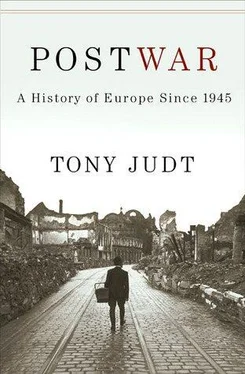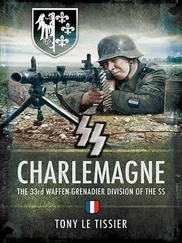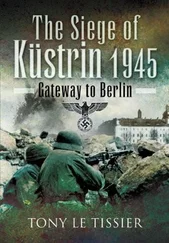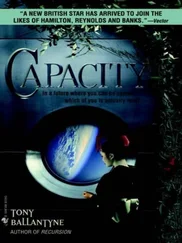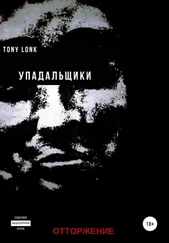The problem of the Jews was distinctive. At first the Western authorities treated Jewish DPs like any other, corralling them in camps in Germany alongside many of their former persecutors. But in August 1945 President Truman announced that separate facilities should be provided for all Jewish DPs in the American Zone of Germany: in the words of a report the President had commissioned to look into the problem, the previously integrated camps and centers were ‘a distinctly unrealistic approach to the problem. Refusal to recognize the Jews as such has the effect… of closing one’s eyes to their former and more barbaric persecution.’ By the end of September 1945, all Jews in the US Zone were being cared for separately.
There had never been any question of returning Jews to the east—no-one in the Soviet Union, Poland or anywhere else evinced the slightest interest in having them back. Nor were Jews particularly welcome in the west, especially if educated or qualified in non-manual professions. And so they remained, ironically enough, in Germany. The difficulty of ‘placing’ the Jews of Europe was only solved by the creation of the state of Israel: between 1948 and 1951 332,000 European Jews left for Israel, either from IRO centers in Germany or else directly from Romania, Poland and elsewhere, in the case of those still left in these countries. A further 165,000 eventually left for France, Britain, Australia and North or South America.
There they would be joined by the remaining displaced persons and refugees from World War Two, to whom should be added a new generation of political refugees from east-central European countries in the years 1947-49. Overall the US admitted 400,000 people in these years, with another 185,000 arriving in the course of the years 1953-57. Canada allowed in a total of 157,000 refugees and DPs, Australia took 182,000 (among them 60,000 Poles and 36,000 Balts).
The scale of this achievement needs to be emphasized. Some people, notably certain categories of ethnic Germans from Yugoslavia and Romania, were left in limbo because the Potsdam agreements did not cover their case. But in the course of half a dozen years, operating in a scarred, embittered and impoverished continent emerging from six years of terrible war and already anticipating the divisions of the Cold War, the Allied Military Governments and the UN civilian agencies succeeded in repatriating, integrating or resettling unprecedented numbers—many millions—of desperate people from all across the continent and dozens of different nations and communities. By the end of 1951, when UNRRA and the IRO were replaced by the newly-established United Nations High Commission for Refugees, there were just 177,000 people left in displaced persons camps in Europe—mostly the aged and the infirm, because no-one wanted them. The last DP camp in Germany, at Foehrenwald in Bavaria, closed in 1957.
The displaced persons and refugees of Europe had survived not just a general war but a whole series of local, civil wars. Indeed, from 1934 through 1949, Europe saw an unprecedented sequence of murderous civil conflicts within the boundaries of existing states. In many cases subsequent foreign occupation—whether by Germans, Italians or Russians—served above all to facilitate and legitimize the pursuit of pre-war political agendas and antagonisms by new and violent means. The occupiers were not neutral, of course. Typically they joined forces with factions within the occupied nation to fight a common foe. In this way, a political tendency or ethnic minority that had been at a disadvantage in peacetime politics was able to exploit the altered circumstances to settle local scores. The Germans, especially, were pleased to mobilize and exploit such sentiments not merely to divide and thus more easily conquer, but also to reduce the trouble and cost of administering and policing their conquered territories: they could rely on local collaborators to do it for them.
Since 1945 the term ‘collaborators’ has acquired a distinctive and pejorative moral connotation. But wartime divisions and affiliations often carried local implications altogether more complicated and ambiguous than the simple post-war attributions—of ‘collaboration’ and ‘resistance’—would imply. Thus in occupied Belgium some Flemish-speakers, repeating a mistake they had already made in the First World War, were tempted by the promise of autonomy and a chance to break the French-speaking elite’s hold on the Belgian state, and welcomed German rule. Here as elsewhere the Nazis willingly played the communal card so long as it suited their purposes—Flemish-speaking Belgian prisoners of war were released in 1940 when hostilities ceased, whereas French-speaking Walloons remained in p-o-w camps throughout the war.
In France and Belgium, as also in Norway, resistance against the Germans was real, especially in the last two years of the occupation when Nazi efforts to press-gang young men into forced labour in Germany drove many of them to opt for the maquis (forests) as a lesser risk. But not until the very end of the occupation did the number of active resisters exceed the numbers of those who collaborated with the Nazis out of belief, venality or self-interest—in France it has been estimated that the likely numbers of fully engaged men and women was about the same on both sides, between 160,000-170,000 at most. And their main enemy, more often than not, was each other: the Germans were largely absent.
In Italy, circumstances were more complicated. The Fascists had been in power for twenty years when Mussolini was overthrown in a palace coup in July 1943. Perhaps for this reason, there was little local resistance to the regime; most active anti-Fascists were in exile. After September 1943, when the country officially became a ‘co-belligerent’ on the Allied side, the German-occupied north of the country was torn between a puppet regime—Mussolini’s ‘Republic of Salò’—and a small but courageous partisan resistance co-operating with and sometimes supported by the advancing Allied armies.
But here, too, what was presented by both camps as a majority of right-thinking Italians locked in conflict with a marginal band of murderous terrorists in league with a foreign power was actually, for the years 1943-45, a genuine civil war, with significant numbers of Italians engaged on either side. The Fascists of Salò were indeed the unrepresentative collaborators of a brutal occupier; but the domestic support they could count on at the time was not negligible, and certainly not obviously less than that of their most aggressive opponents, the Communist-led partisans. The anti-Fascist resistance was in reality one side in a struggle among Italians whose memory came to be conveniently occluded in the post-war decades.
In eastern Europe matters were more complicated still. Slovaks and Croats took advantage of the German presence to establish notionally independent states in accordance with the cherished projects of pre-war separatist parties. In Poland the Germans were not looking for collaborators; but further north—in the Baltic States and even Finland—the Wehrmacht was initially welcomed as an alternative to occupation and absorption by the Soviet Union. Ukrainians especially did their best to capitalize on German occupation after 1941 to secure their long-sought independence, and the lands of eastern Galicia and western Ukraine saw a murderous civil conflict between Ukrainian and Polish partisans under the aegis of both anti-Nazi and anti-Soviet partisan warfare. In these circumstances, fine distinctions between ideological warfare, inter-communal conflict and the battle for political independence lost their meaning: not least for the local populations, the primary victims in every case.
Poles and Ukrainians fought with or against the Wehrmacht, the Red Army and each other according to the moment and the place. In Poland this conflict, which after 1944 transmuted into guerilla warfare against the Communist state, took the lives of some 30,000 Poles in the years 1945-48. In the Soviet-occupied Ukraine, the last partisan commander, Roman Shukhevych, was killed near Lviv in 1950, though sporadic anti-Soviet activity persisted for a few years more in Ukraine and Estonia in particular.
Читать дальше
